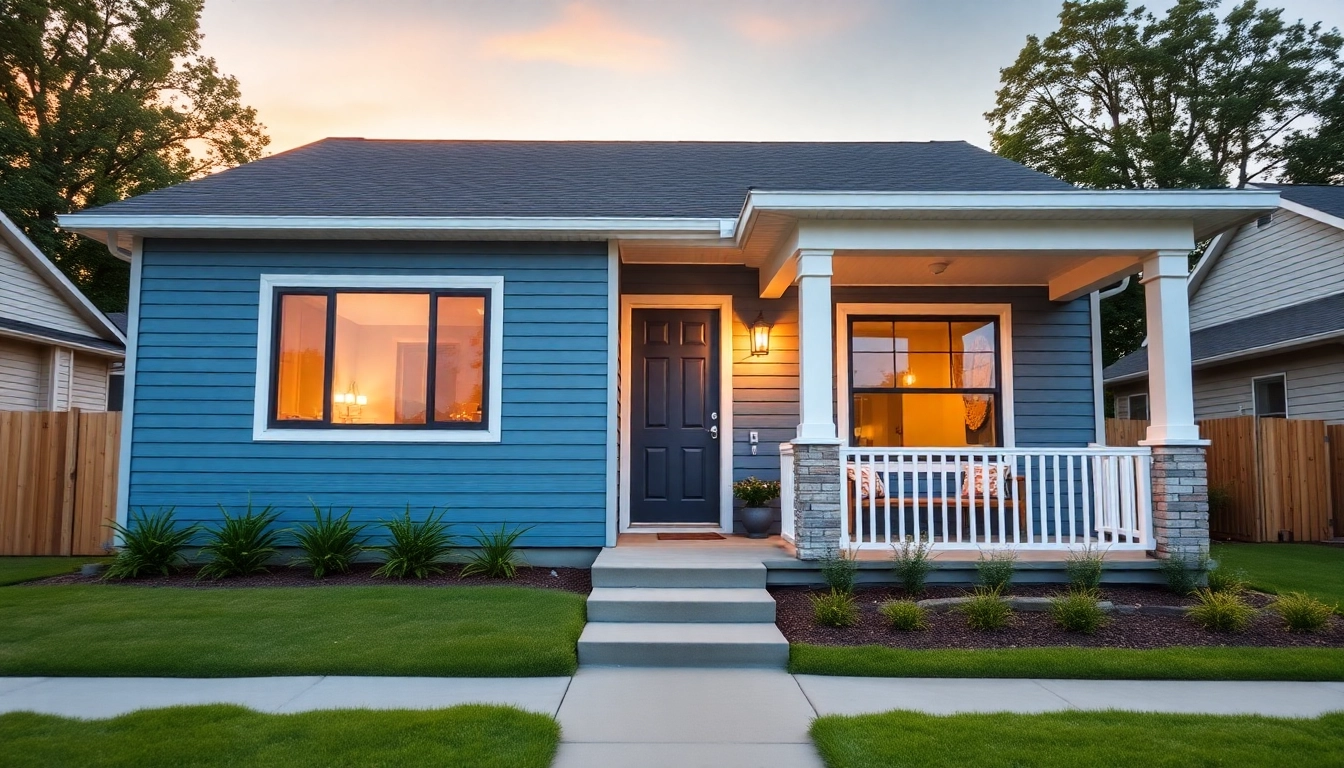Understanding Exterior Renovations
What are Exterior Renovations?
Exterior renovations involve enhancing, remodeling, or restoring the outside of a home or building. These renovations can range from minor updates, such as a fresh coat of paint, to major projects, like complete additions or structural changes. Remarkably, the exterior of your property forms the first impression for visitors and potential buyers, making it crucial to maintain an attractive and functional appearance. Whether you aim to boost curb appeal, increase property value, or enhance energy efficiency, understanding the nuances of exterior renovations is essential.
Why Invest in Your Home’s Exterior?
Investing in your home’s exterior offers numerous benefits, including aesthetic improvements, increased property value, and better energy efficiency. Additionally, a well-maintained exterior protects your home from weather damage and could lead to lower maintenance costs in the long run. In today’s competitive real estate market, homes with attractive exteriors are more likely to sell faster and at a better price. Furthermore, updating your home’s exterior makes it more enjoyable to live in, reflecting personal styles and preferences.
Common Types of Exterior Renovations
Several common types of exterior renovations can significantly enhance a property. These include:
- Roofing: Upgrading or replacing roofing materials can improve both appearance and functionality.
- Siding: Changing siding materials can revitalize a home’s look and improve insulation.
- Windows and Doors: Replacing old windows and doors not only enhances appearance but also improves energy efficiency.
- Landscaping: Enhancing outdoor spaces with landscaping can provide a welcoming atmosphere.
- Decks and Patios: Adding or renovating outdoor living spaces can extend your living area outdoors.
Choosing the Right Materials for Exterior Renovations
Durable Siding Options
Choosing the correct siding is crucial for protecting your home and enhancing its appearance. Durable siding options include:
- Vinyl Siding: It provides a balance of affordability and durability, with a variety of colors and styles available.
- Fiber Cement Siding: Known for its resistance to weather and pests, fiber cement siding replicates the look of wood without the associated upkeep.
- Wood Siding: Offers a classic aesthetic but requires regular maintenance to protect against rot and insects.
- Metal Siding: Provides a sleek, modern look and is extremely durable, often made from aluminum or steel.
Energy-Efficient Windows
Updating to energy-efficient windows is one of the most impactful exterior renovations. These windows reduce heating and cooling costs, enhance comfort, and often qualify for tax rebates. Key features to consider include:
- Double or Triple Glazing: Multiple layers of glass create insulation.
- Low-E Coatings: These reflect infrared light while allowing visible light to pass through.
- Energy Star Certification: Look for windows certified by Energy Star for optimal energy efficiency.
Stylish Doors and Accessories
The front door is a focal point in home exteriors. Selecting stylish and durable doors can make a statement while providing security. Consider the following options:
- Fiberglass Doors: They mimic the look of wood but require less maintenance.
- Steel Doors: Highly durable and secure, steel doors often come with high energy efficiency ratings.
- Glass Doors: Ideal for maximizing natural light, especially in modern homes.
Planning Your Exterior Renovation Project
Setting a Realistic Budget
When planning exterior renovations, establishing a realistic budget is key. Assess your financial capability, gather estimates from contractors, and factor in unexpected costs. It’s advisable to allocate around 10-20% of your overall budget for unplanned expenses. Utilize resources like home improvement apps to track expenses and manage your budget effectively.
Hiring Professional Contractors
Choosing the right contractor is essential for a successful renovation. Look for experienced professionals with good reviews and a portfolio of their work. Don’t hesitate to ask for references and verify licenses and insurances. Remember, getting multiple bids can help you compare costs and services, ensuring you make an informed decision.
Creating a Renovation Timeline
Establishing a renovation timeline helps in smooth project execution. Work with contractors to outline each phase of the project, estimating how long each task will take while considering weather conditions and permit regulations. Being proactive about scheduling can help minimize disruptions and keep your project within budget.
Maximizing Value with Exterior Renovations
Which Renovations Offer the Best Return on Investment?
Homeowners often wonder which exterior renovations yield the highest return on investment (ROI). Based on recent data, here are some renovations that typically offer excellent returns:
- Roof Replacement: 100% ROI.
- Garage Door Replacement: Also near 100% ROI.
- Siding Replacement: Offers an ROI around 82-86%.
- Window Replacement: Provides a 63-67% ROI depending on material choice.
Enhancing Curb Appeal
Curb appeal plays a substantial role in the attractiveness and value of your home. Consider updates like fresh landscaping, painting, or new outdoor lighting to improve allure. Even small changes, like adding flower beds or upgrading outdoor fixtures, can significantly enhance how your home looks from the street.
Improving Energy Efficiency
Exterior renovations can dramatically improve energy efficiency. Insulation, high-efficiency windows, and properly installed siding can lower energy costs, making your home more environmentally friendly. Utilizing energy-efficient appliances and solar panels during renovations can also contribute to long-term savings.
Maintenance After Exterior Renovations
Regular Upkeep Tips
Post-renovation maintenance ensures your exterior stays in prime condition. Regularly check for damages from weather and pests, clean gutters to prevent water buildup, and wash your siding to maintain appearance. Schedule professional inspections of critical areas like the roof and foundation every few years to catch issues early.
Seasonal Maintenance Checklist
Creating a seasonal maintenance checklist can simplify upkeep. Important tasks can include:
- Spring: Inspect your roof, clean gutters, check for winter damage.
- Summer: Maintain outdoor spaces, repaint or re-stain decks and fences.
- Fall: Prepare for winter by sealing gaps, insulating pipes, and cleaning HVAC systems.
- Winter: Check for ice dams and remove snow builds on the roof to prevent structural damage.
Signs Your Home Needs More Renovations
Recognizing when further renovations are needed is crucial. Pay attention to signs such as:
- Peeling paint or rotten siding.
- Air leaks around windows and doors.
- Water stains on ceilings or walls.
- Visible cracks in foundations or siding.
If you notice any of these issues, it may be time for additional renovations to protect your investment.



